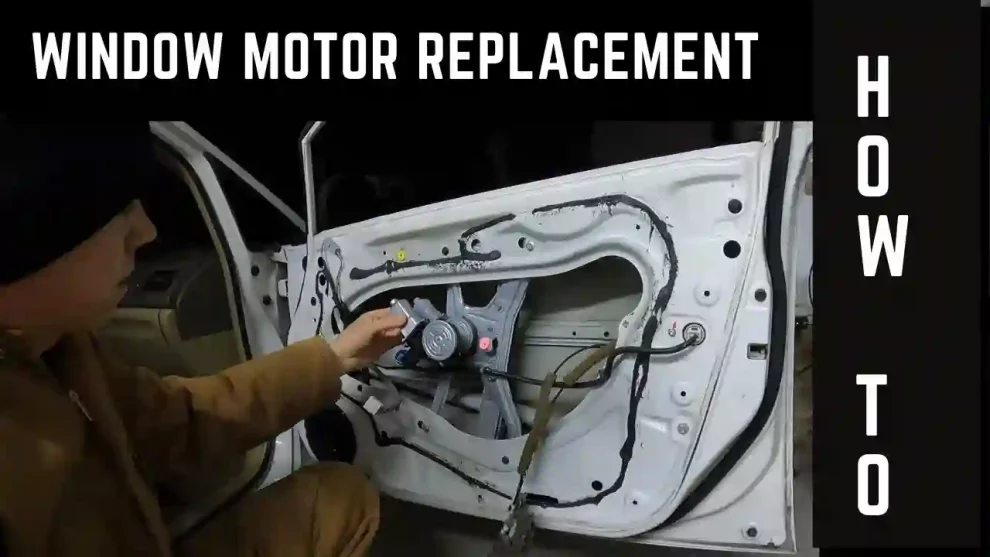When you roll down your car window, you probably don’t give much thought to the mechanism responsible for making it happen. However, the design and performance of your car’s window regulator play a significant role in your overall driving experience. A well-designed and properly functioning window regulator ensures smooth and reliable window operation, while a poorly designed or malfunctioning one can lead to frustration and inconvenience. In this article, we’ll explore the impact of window regulator design on performance and how it can affect your day-to-day driving.
Understanding the Window Regulator:
Before delving into the impact of design, let’s briefly understand what a window regulator is and how it works. The window regulator is a mechanical component in your vehicle responsible for raising and lowering the window glass. It can be either manually operated (using a hand crank) or powered by an electric motor for automatic windows. In power window systems, the regulator works in conjunction with various other components, including switches, motors, and electrical wiring.
The Role of Window Regulator Design:
Window regulators may seem like simple devices, but their design can significantly impact various aspects of their performance. Here are some key areas where design plays a crucial role:
- Smooth Operation: The design of the window regulator mechanism should ensure that the window moves up and down smoothly without jerking or binding. A well-designed regulator minimizes friction and maximizes efficiency, resulting in a seamless operation.
- Durability and Longevity: The choice of materials and construction methods during the design phase determines the window regulator’s durability. High-quality materials and robust construction can extend the regulator’s lifespan, reducing the need for frequent replacements.
- Noise Reduction: A well-designed window regulator should operate quietly. Poorly designed regulators can produce annoying squeaks, rattles, or grinding noises when in use, which can be distracting and unpleasant for occupants.
- Safety: Safety is paramount in automotive design. A properly designed window regulator should have safety features that prevent accidents or injuries. For instance, power window regulators often include anti-pinch technology to stop the window from closing if it encounters an obstruction.
- Weather Resistance: The design should take into account exposure to various weather conditions. Proper sealing and protection against moisture and debris are essential to prevent damage to the regulator components and ensure consistent performance.
- Compatibility: The design should be tailored to the specific make and model of the vehicle to ensure a proper fit and function. Compatibility issues can arise if the regulator design is not well-suited to the vehicle’s door frame and window size.
- Ease of Maintenance: If maintenance or repairs are needed, a well-designed regulator should allow for straightforward access to components and ease of disassembly and reassembly.
Impact on Driver Experience:
The design of the window regulator can significantly impact the driver’s and passengers’ overall experience. Here’s how it can influence your day-to-day driving:
- Convenience: A smoothly operating window regulator makes it easy to adjust the windows quickly and efficiently, improving convenience for both the driver and passengers.
- Comfort: Properly designed regulators reduce noise levels inside the vehicle, creating a quieter and more comfortable driving environment. This is especially important for long trips or highway driving.
- Safety: Safety features like anti-pinch technology and reliable operation contribute to a safer driving experience. In emergency situations, being able to quickly close or open a window can be crucial.
- Reliability: A well-designed regulator is less prone to malfunctions, reducing the likelihood of unexpected window failures. This reliability is essential for uninterrupted use.
Common Window Regulator Design Features:
Manufacturers often incorporate specific design features to enhance the performance and reliability of window regulators. Here are some common design features:
- Anti-Pinch Technology: Many modern power window regulators include sensors that detect obstructions during closing. If an obstruction is detected, the window automatically reverses direction to prevent injuries or damage.
- Cable System vs. Scissor Mechanism: Window regulators can use different mechanisms, such as cable-driven systems or scissor-style arms. The choice of mechanism can impact the regulator’s performance and durability.
- Sealing and Weatherproofing: Proper sealing and weatherproofing are crucial to prevent water, dust, and debris from entering the door panel and damaging the regulator components.
- High-Quality Materials: The use of high-quality materials, such as strong metals and durable plastics, contributes to the longevity and reliability of the regulator.
- Efficient Motor and Gear Design: In power window regulators, the efficiency of the electric motor and gear design affects how quickly and smoothly the window operates.
Regular Maintenance and Care:
While the design of the window regulator plays a significant role in its performance, regular maintenance and care are also essential. Here are some maintenance tips to ensure your window regulator continues to operate optimally:
- Keep the Tracks Clean: Clean the window tracks regularly to prevent debris and dirt from interfering with the smooth movement of the window.
- Lubricate Moving Parts: Apply a suitable lubricant to the moving parts of the window regulator to reduce friction and wear.
- Inspect for Wear: Periodically inspect the regulator for signs of wear or damage, such as loose components, frayed cables, or worn-out gears.
- Test Safety Features: Test the anti-pinch and safety features to ensure they are functioning correctly.
- Address Issues Promptly: If you notice any unusual noises, slow operation, or other issues with your window regulator, address them promptly to prevent further damage.
In Conclusion:
The design of your car’s window regulator plays a crucial role in its overall performance and your driving experience. A well-designed regulator ensures smooth, reliable, and safe window operation. Regular maintenance and care are also essential to extend the regulator’s lifespan and maintain its performance. When considering the impact of window regulator design, it’s clear that this seemingly small component plays a significant role in your daily driving comfort and convenience.
















Add Comment